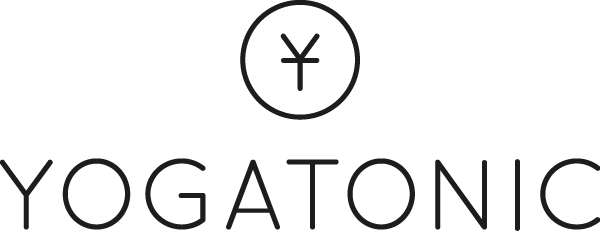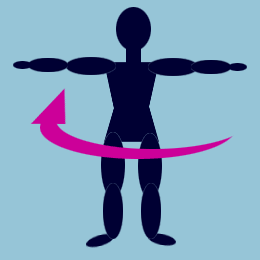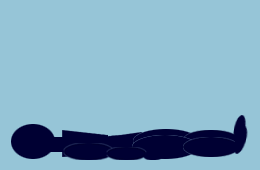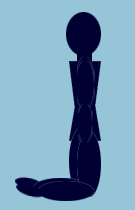Was sind die 5 Tibeter?*What are the Five Tibetan Rites?*
Die Fünf Tibeter sind eine einfach geniale Kombination von fünf Bewegungsabläufen. Sie gehören zu den ältesten fernöstlichen Methoden, Entspannung, Wohlbefinden und Fitness zu finden und so neue Kräfte und Energien zu tanken.
Die Fünf Tibeter stellen ein einmaliges System an Energiearbeit dar. Mit den fünf Bewegungsabläufen werden die sieben Hauptchakren (Energiezentren des Körpers) aktiviert. Die Chakren wirken durch die sieben Drüsen und sind dafür verantwortlich, dass die Hormonproduktion ausgewogen ist. Sie sind verantwortlich dafür, dass das endokrine System mit Lebensenergie versorgt wird und an alle Organe und Körpersysteme weitergeleitet werden. Es entsteht eine energetische Balance zwischen dem Körper und seinen Organen, den endokrinen Drüsen und deren Hormonausschüttung.
In ca. 20 täglichen Praxisminuten werden durch die rhythmische Bewegung der fünf Übungen und die gleichmäßig, bewusst praktizierte Atmung alle Muskeln, Sehnen, Bänder aktiviert, so dass diese Übungen auch als Fitnessprogramm angesehen werden können. Jede Übung zw. 3-21 mal ausführen.
*The Five Tibetan Rites are a simply brilliant combination of five motion sequences. They belong to the oldest methods from the Far East to gain relaxation, wellbeing and fitness and in this way refuel your strength and energy.
The Five Tibetan Rites are a unique system of working with energy. By using the five motion sequences the seven main Chakras (energy centres of the body) are activated. The Chakras work through seven glands and are responsible for a balanced hormone production as well as the sustenance of the endocrine system with vital energy which subsequently is redirected to all organs and body systems. An energetic balance between the body and its organs, between the endocrine glands and hormone release arises.
By practising these rites daily for 20 minutes all the muscles, sinews and ligaments in your body are activated by rythmical movements and regular, conscious breathing; therefore all these exercises can be viewed as a fitness program. Each exercises should be performed 3-21 times. *
Rite 1: Stand upright, extend your arms at shoulder level away from your body and spin clockwise (if looking at a clock face on the floor). Keep your eyes looking directly in front of you, do not focus on any one point, let your vision blur as you spin. Turn up to 21 times or until you feel unstable or dizzy.
Breathing: breath in and out of your stomach. An opera singer, stage actor/actress or yogi experiences the benefit of breathing from this point of the body. When you stop spinning, breath even more deeply from your stomach until your head stops spinning and your balance returns to normal.
Tips and Recommendations: Work your way up to 21 spins. Speed is not so important, just try to spin 21 times and stop.
Rite 2: Lay down on your back with your arms to your side, palms up, keep your legs straight, begin your inhalation, raise your legs off the ground until as high as possible and pick your head off the ground, bending your neck with your chin falling toward your chest. Begin your exhalation and return to laying flat on the ground. Repeat up to 21 times.
Breath In: Raising your legs and head
Breath Out: Lowering your legs and head
Tips and Recommendations: When starting out, bend your legs until your stomach strengthens. If your feel discomfort, place your hands (palms facing down) under your buttocks to support your lower spine. As you progress, straighten your legs and try to raise and lower them at the same speed. Once you have worked up to 21 repetitions, try to move at a nice steady rhythm without stopping.
Rite 3: Kneel with your legs together, arms extended, palms of your hands on the side of your thighs, drop your chin to your chest, begin your inhalation, raise your head and lean back, move your hands to the back of your thighs and let them drop lower and support your weight, crane your head and neck backward, relax your lower spine. Begin your exhalation, start to come forward back to kneeling position with your head back up in the straight position. Repeat up to 21 times.
Breath In: Going backward
Breath Out: Coming forward
Tips and Recommendations: When you start this exercise, use the weight of your head to come forward instead of forcing your chin to your chest with your muscles. When you lean back, avoid craning your neck, simply let it drop with its own weight. Eventually, you can bring your shoulder blades towards each other when you're in the back position. Keep a steady movement while going backward and forward. Keep your eyes open to maintain balance. Later, try the movement with your eyes closed to feel the difference and see if you can relax even more in the backward position.
Rite 4: Sit on the floor, legs a little less than shoulder width apart, arms to your sides with hands extended flat on the ground and fingers pointed forward, drop your head toward your chest, begin your inhalation, raise your buttocks off the ground while bending your knees, shift your weight to your arms/hands and legs/feet, continue to raise your buttocks until your trunck and thighs are parallel to the ground, let your head fall back. Begin your exhalation and return to sitting position with your head dropped forward. Repeat up to 21 times.
Breath In: Raising off the ground
Breath Out: Returning back to sitting position
Tips and Recommendations: When you begin this exercise, just try to get from the starting to ending posture. It's easier to do it than read about it. In the beginning, you might not be used to your body weight on your wrists. Doing some wrist warm-ups before you begin can prevent discomfort. Once you have worked your way up to 21 repetitions, try to perform the movements without stopping.
Rite 5: Get down on the floor on your hands and knees (in push-up position) with hands and legs a little less than shoulder width apart. Begin your inhalation, come up on your toes with weight in your arms, straighten your legs, arch your back, lean your head back, do not let any of your body touch the ground except for your toes and hands (Cobra in Yoga). Begin your exhalation, bend at the waist, bend your knees, push your buttocks up into the air, make an inverted V shape with your legs and arms straight, tuck your chin toward your chest (Downward Dog in Yoga), try to put your feet flat on the ground. Begin your next inhalation and repeat up to 21 times.
Breath In: Raising hips up into an ^ shape - downward dog.
Breath Out: Hips down & head coming up into cobra.
Tips and Recommendations: In the beginning, you will need to find where to place your hands and feet to make a complete inverted-V shape. You may do this exercise for years and never get your feet flat on the ground (a symptom of western living and always sitting in a chair). Once you've worked your way up to 21 repetitions, work on keeping a steady rhythm while going in and out of each position.
Finishing Posture Recommendation
After Exercise 5, lay flat on your stomach with your arms stretched out from side to side like Christ position. Keep your chin on the ground and close your eyes. Feel you heart pumping and blood circulating through your body. Wait until your hearth beat and breath returns to normal. Turn your head to once side and take a few deep breaths. Relax for 1 minute.





